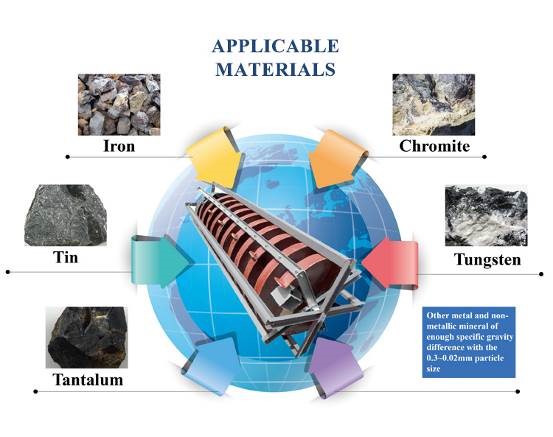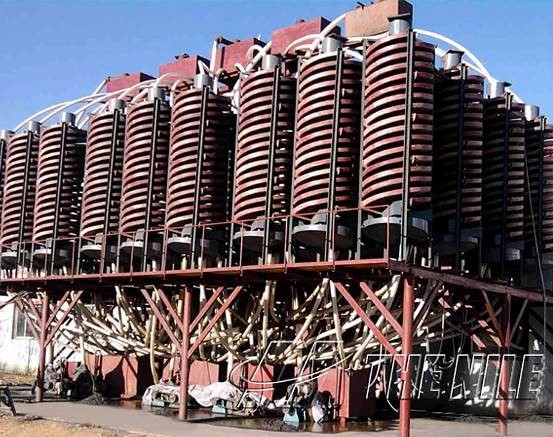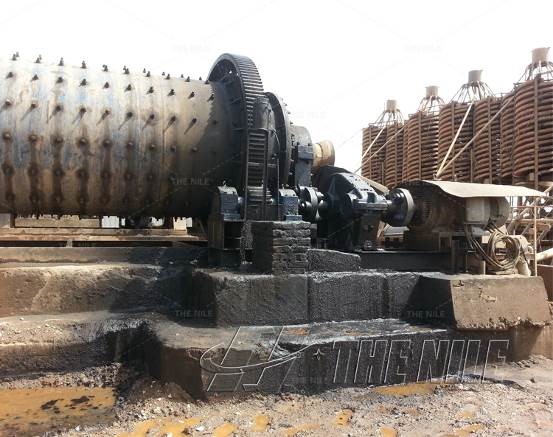The spiral chute mainly uses the inertial centrifugal force generated by the minerals of different densities in the spiral rotation to achieve the separation of light and heavy minerals. Because of its simple equipment structure, low power consumption, and large processing capacity, it is widely used in the re-separation process. At present, mineral resources are facing such disadvantageous conditions as depletion, refinement, and hybridization. Improving the beneficiation efficiency of sorting equipment and improving the recovery rate have become the top priorities of current mining development and research topics. This article mainly teaches you how to effectively improve the beneficiation efficiency of the spiral chute from the aspect of feeding ore.
1. Mineral particle size
Generally, the upper limit of the feeding size of the spiral chute is 6mm. Muddy minerals need to be desilted and graded before feeding to prevent the material from clogging and affecting the sorting efficiency.
2. Shape of mineral particles
The shape of the mineral particles also affects the speed of mineral movement in the spiral chute. When the shapes of useful heavy minerals are mostly irregular or flaky, and the gangue minerals are round, the movement speed of heavy minerals is slow, which is conducive to stratification and settlement, reduces the grade of tailings, and improves the separation efficiency.
3. Mineral density
Since the spiral chute is mainly sorted according to the different density differences of minerals, the greater the density difference between the useful minerals and gangue minerals in the selected ore, the more conducive to sorting.
4. Feeding volume
Ore-feeding volume affects the thickness and velocity of ore flow to a certain extent. Therefore, in order to improve efficiency, the feed volume of coarse-grained materials is large, and the feed volume of fine-grained materials is small.
5. Ore concentration
The spiral chute requires that the concentration of the ore feed be greater than 30%, and should not be too large or too small. If the concentration of the ore is too large, the viscosity of the ore slurry increases, and the ore layer is not easy to loosen, which causes the settlement of the ore particles to be hindered, which seriously affects the layering effect and the movement speed of the ore particles, thereby reducing the concentrate grade and recovery rate. If the concentration of the ore is too small, the processing capacity per unit time is reduced, the mineral material layer becomes thinner, and it cannot be layered and divided, resulting in an increase in the slurry flow velocity, and the heavy minerals are discharged before the layering and settlement, which reduces the separation efficiency.





